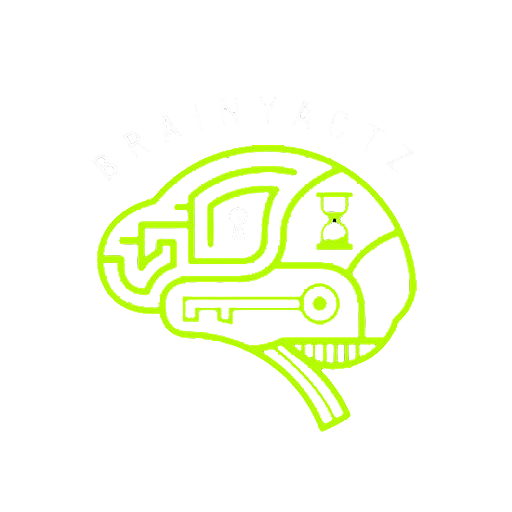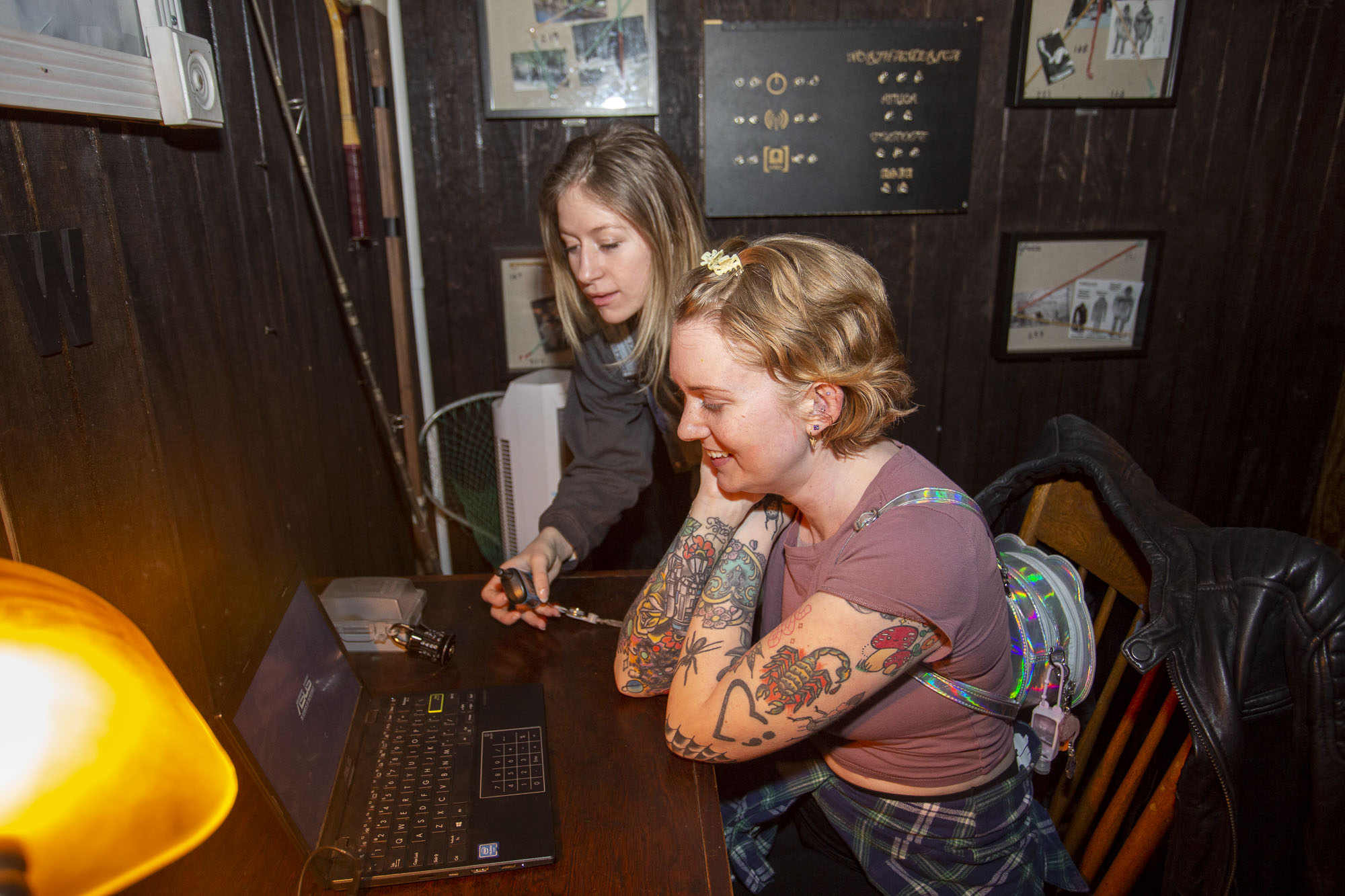With cutting-edge escape room technologies, corporate team building takes a leap into the future. Management teams now harness data-driven solutions to create immersive experiences that foster entrepreneurship and critical thinking. These innovative approaches transform the atmosphere of traditional team-building exercises, pushing employees to collaborate in new and exciting ways. This article’ll explore how the latest tech advancements are revolutionizing corporate escape rooms and enhancing team dynamics.
Key Takeaways
- Virtual reality escape rooms offer immersive team-building experiences that break physical boundaries
- AI-powered escape rooms adapt challenges in real-time to match team skills and dynamics
- Interactive technology enhances problem-solving and strengthens interpersonal connections in corporate settings
- Augmented reality blends physical and digital elements to create unique collaborative learning environments
- IoT devices transform escape rooms into interconnected puzzles that foster innovative problem-solving and communication
Harnessing VR to Transform Corporate Team Building

Virtual reality has revolutionized corporate team building, offering immersive experiences that spark creativity and foster collaboration. As the pandemic reshaped workplace dynamics, VR escape rooms became a powerful tool for remote teams to connect and learn. These digital environments provide rich analytics, allowing companies to measure team performance and track individual growth. By tapping into emotions and creating shared experiences, VR escape rooms offer a unique platform for developing problem-solving skills and strengthening team bonds across physical boundaries.
Immersing Teams in Virtual Worlds for Enhanced Collaboration
Virtual worlds offer organizations a unique platform to immerse teams in collaborative challenges, fostering stronger connections and boosting revenue through improved teamwork. Using mobile devices, employees can access these digital environments from anywhere, guided by a skilled gamemaster who facilitates the experience and provides real-time feedback. This innovative approach to team building allows companies to gather valuable insights into their employees’ strengths and weaknesses, enabling targeted improvements in organizational effectiveness.
Virtual Reality: Breaking Physical Boundaries in Team Efforts
Virtual reality breaks physical boundaries in team efforts, transforming corporate training and development through immersive experiences. Touchscreen interfaces and automation enhance user interaction within virtual spaces, blending entertainment with practical skill-building. VR escape rooms transport teams to diverse environments, fostering collaboration regardless of geographical limitations:
AI-Driven Scenarios for Dynamic Team Challenges

AI-powered escape rooms are reshaping corporate team building with dynamic, personalized challenges. Advanced software integrates physics-based puzzles and adaptive difficulty levels, ensuring continuous engagement for every customer. These intelligent systems analyze team performance in real time, adjusting the complexity and interactivity of scenarios to match skill levels. By adhering to strict terms of service, AI-driven escape rooms maintain fairness while pushing teams to their limits, fostering growth and collaboration in a secure, cutting-edge environment.
Customizing Puzzles With Artificial Intelligence
Artificial intelligence transforms the escape room landscape by customizing puzzles to match team dynamics. AI algorithms analyze players’ problem-solving styles, adapting riddles and challenges in real time to maintain an optimal difficulty level. This technology acts as a virtual teacher, guiding teams through increasingly complex scenarios while tracking their score and progress, ensuring a tailored and engaging experience that pushes the boundaries of virtual reality team building.
How AI Adapts to Team Skills for Continuous Engagement
AI-powered escape rooms adapt to team skills, ensuring continuous engagement through dynamic challenges. These systems monitor players’ health metrics and attention levels using IoT sensors, adjusting puzzle complexity in real-time. Artificial intelligence algorithms analyze team performance, seamlessly integrating 3D-printed props and customized scenarios to maintain an optimal difficulty curve:
- Assess team problem-solving strategies.
- Adjust puzzle complexity on-the-fly
- Introduce new challenges based on skill progression
- Provide personalized hints and guidance
- Generate unique scenarios for each session
Interactive Technology: The New Frontier in Team Building

Interactive technology has ushered in a new era of corporate team building, transforming traditional escape rooms into dynamic, high-tech experiences. These innovative systems blend sophisticated gameplay mechanics with cutting-edge hardware, creating immersive environments that challenge teams to work together under pressure. As the clock ticks down, employees engage with touchscreens, motion sensors, and video game-inspired interfaces, pushing the boundaries of accessibility and design. This fusion of technology and teamwork enhances problem-solving skills and fosters stronger interpersonal connections, making corporate escape rooms a powerful tool for modern workforce development.
Engaging Teams With Touchscreens and Motion Sensors
Touchscreens and motion sensors transform corporate escape rooms into high-tech playgrounds, engaging teams through gamification. These tools break language barriers, allowing California-based companies to connect global teams in immersive challenges. Integrating newsletter sign-ups within the experience encourages ongoing engagement, turning one-time events into lasting team-building initiatives.
Facilitating Teamwork Through Interactive Challenges
Interactive challenges in corporate escape rooms facilitate teamwork through immersive learning experiences. These simulations transform the education and team building market, offering a hands-on approach to concept mastery. Teams engage in dynamic problem-solving scenarios that mirror real-world business challenges, fostering collaboration and communication skills essential in today’s competitive landscape:
- Solve complex puzzles using cutting-edge interfaces.
- Navigate virtual environments with team coordination
- Analyze data and make decisions under time pressure
- Adapt strategies based on real-time feedback
- Overcome obstacles through shared knowledge and skills
The Impact of Augmented Reality in Team Dynamics

Augmented reality (AR) has become a game-changer in corporate team building, blending the physical world with digital elements to create immersive adventure games. This technology transforms ordinary rooms into extraordinary environments, fostering a sense of community and pushing the boundaries of science-based problem-solving. By overlaying digital information in the real world, AR enhances customer service training and team dynamics, allowing participants to interact with virtual objects and scenarios in previously impossible ways. As teams navigate these hybrid spaces, they develop creative solutions to complex challenges, strengthening their collaborative skills and adaptability in an increasingly digital workplace.
Merging Real and Virtual for Unforgettable Team Experiences
Augmented reality merges real and virtual elements, creating unforgettable team experiences that challenge imagination and foster skill development. By overlaying digital information onto physical spaces, AR escape rooms cultivate a unique culture of teamwork, where participants must collaborate to decipher clues and solve puzzles. This blend of realities enhances problem-solving abilities and improves information retention, making it an invaluable tool for corporate training and team building.
AR: A Tool for Creative Problem-Solving in Teams
Augmented reality is a powerful tool for creative problem-solving in corporate teams, leveraging wearable technology and mobile apps to enhance collaborative thinking. By integrating AR into escape room challenges, companies tap into the psychology of teamwork, using camera-enabled devices to overlay digital clues and puzzles onto the physical environment. This fusion of real and virtual elements pushes teams to think outside the box, fostering innovative solutions and strengthening group dynamics.
- Teams use AR headsets to view hidden clues
- Mobile apps provide interactive puzzles and hints
- Wearable devices track team progress and communication
- Cameras detect real-world objects to trigger virtual events
- AR interfaces encourage diverse problem-solving approaches
IoT Integration for a Seamless Escape Room Experience

The Internet of Things (IoT) has revolutionized corporate escape rooms, creating seamless experiences that challenge teams to work together in new ways. Smart objects, electronic locks, and connected devices transform ordinary puzzles into dynamic challenges that require collaboration and quick thinking. Companies now leverage IoT technology to design rooms where every interaction, from using a smartphone to unlocking a computer, has a meaningful impact on the team’s progress. This integration of digital and physical elements enhances the immersive nature of escape rooms and provides valuable insights into team dynamics and problem-solving skills.
Using IoT to Create a Connected, Cooperative Team Experience
IoT devices transform corporate escape rooms into interconnected puzzles that foster collaboration and push teams to their limits. Smart electronics respond to participants’ actions in real-time, adapting the challenge based on their progress and encouraging innovative problem-solving. This dynamic business model creates a fully immersive experience where every image, sound, and interaction contributes to the team’s shared goal, enhancing communication and strategic thinking skills essential in today’s corporate environment.
The Role of Smart Objects in Team-Based Puzzles
Smart objects infuse team-based puzzles with intelligence, transforming corporate escape rooms into high-tech immersive experiences. These connected devices elevate problem-solving challenges by integrating seamlessly into the room’s narrative, fostering deeper engagement and collaboration among participants. As teams interact with these intelligent props, they must adapt their strategies, leveraging collective knowledge to unravel complex puzzles that respond dynamically to their actions:
- Sensor-equipped artifacts reveal clues when manipulated correctly
- Voice-activated systems challenge teams to communicate effectively
- RFID-tagged items unlock new puzzle layers when combined
- Gesture-recognition devices test non-verbal team coordination
- Adaptive lighting and sound systems enhance immersion based on progress
Gamification Strategies to Boost Team Spirit
Gamification strategies have transformed corporate team building, turning escape room challenges into immersive experiences that boost team spirit. By leveraging virtual reality headsets and sophisticated lighting systems, companies create captivating environments that blur the lines between work and play. These high-tech escape rooms incorporate storytelling elements and competitive features, pushing teams to collaborate in new ways. Employees who navigate virtual puzzles and physical challenges develop stronger bonds and sharpen their problem-solving skills. Integrating leaderboards and achievement systems further motivates teams, fostering a sense of friendly competition that drives engagement and strengthens team cohesion.
Incorporating Competitive Elements for Motivating Teams
Augmented reality transforms corporate escape rooms into dynamic scavenger hunts, fueling healthy competition among teams. As participants navigate increasingly complex challenges, they develop leadership skills and adapt to new technologies. This gamified approach motivates employees to push their limits, fostering a spirit of collaboration and innovation within the organization.
Leaderboards and Achievements: Encouraging Team Cohesion
Leaderboards and achievements in corporate escape rooms fuel team cohesion by tapping into employees’ competitive spirit. These gamification elements transform problem-solving exercises into engaging virtual world experiences, encouraging teams to pool their knowledge for better outcomes. As groups tackle challenges, they accumulate points and unlock achievements, creating a shared customer experience that reinforces collaboration and sparks creative brainstorming:
Conclusion
Cutting-edge technologies have transformed corporate escape rooms into powerful team-building tools, enhancing collaboration and problem-solving skills across physical boundaries. Virtual reality, artificial intelligence, and augmented reality create immersive experiences that adapt to team dynamics, fostering creativity and engagement. Integrating IoT devices and smart objects adds complexity to puzzles, encouraging innovative thinking and seamless cooperation. Gamification strategies, including leaderboards and achievements, further motivate teams, driving engagement and strengthening cohesion in an increasingly digital workplace.

